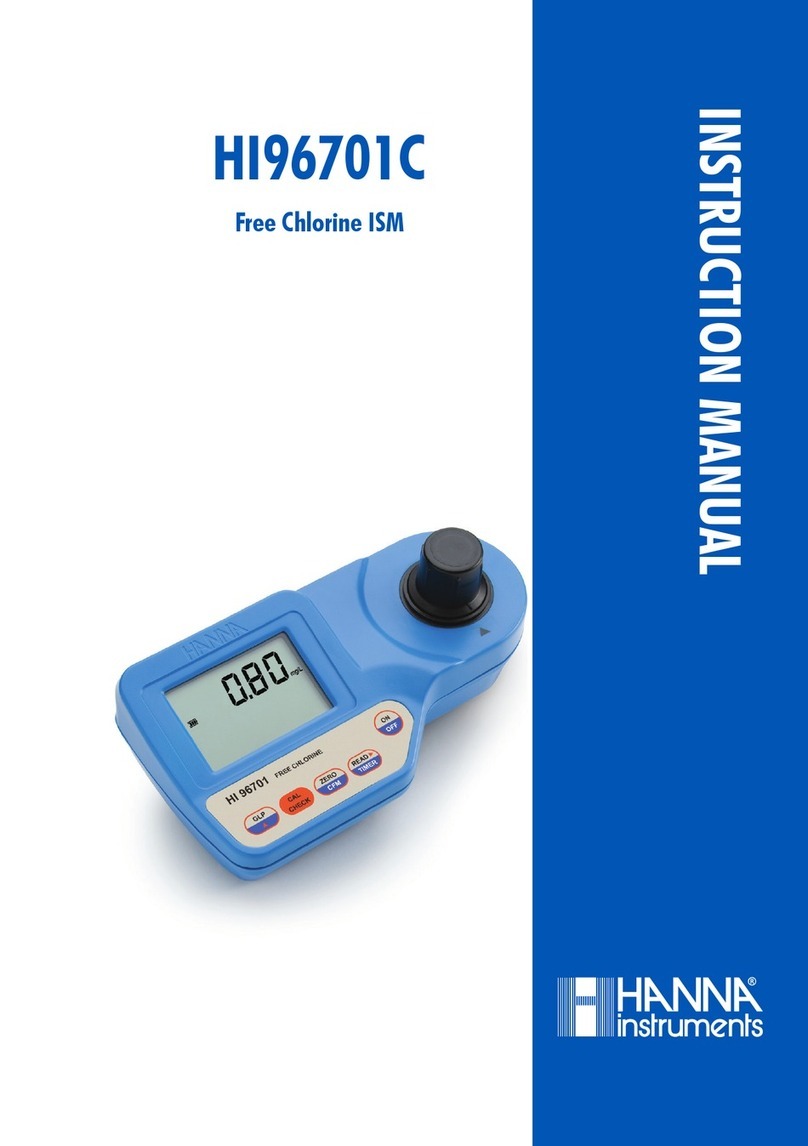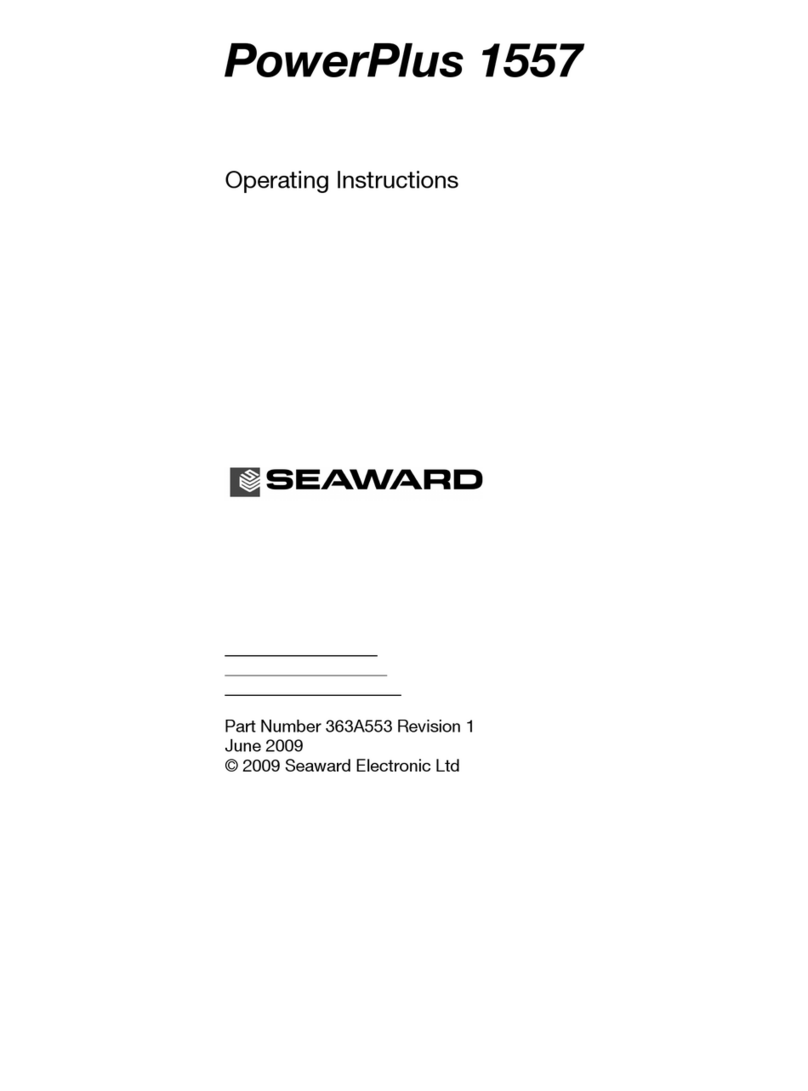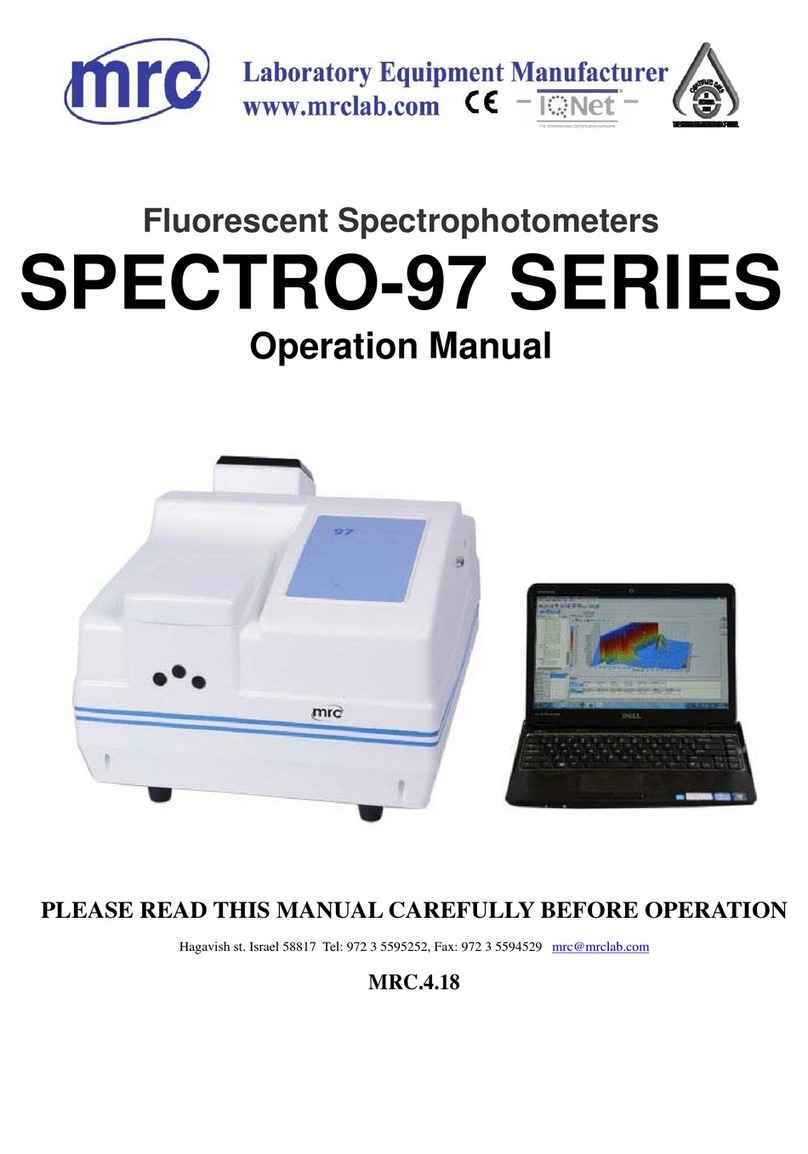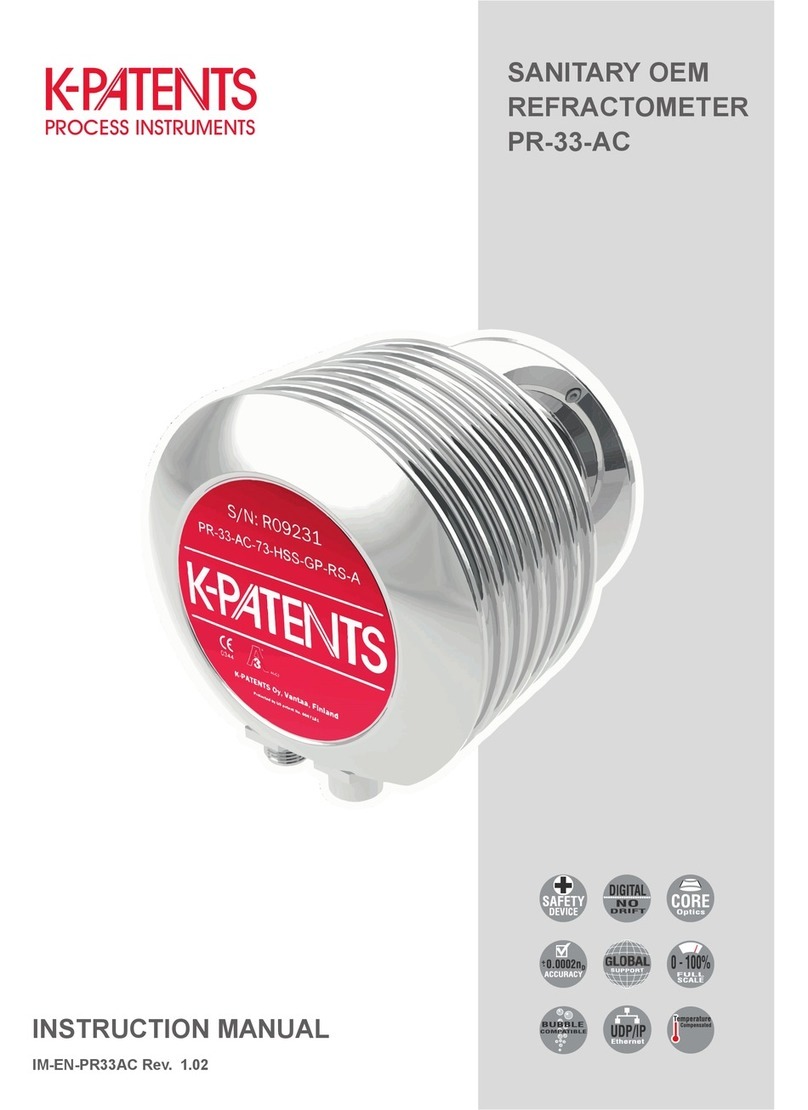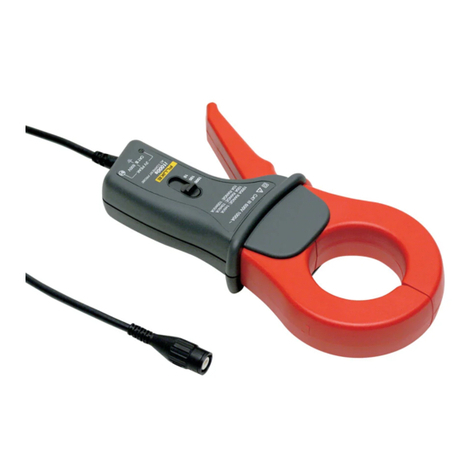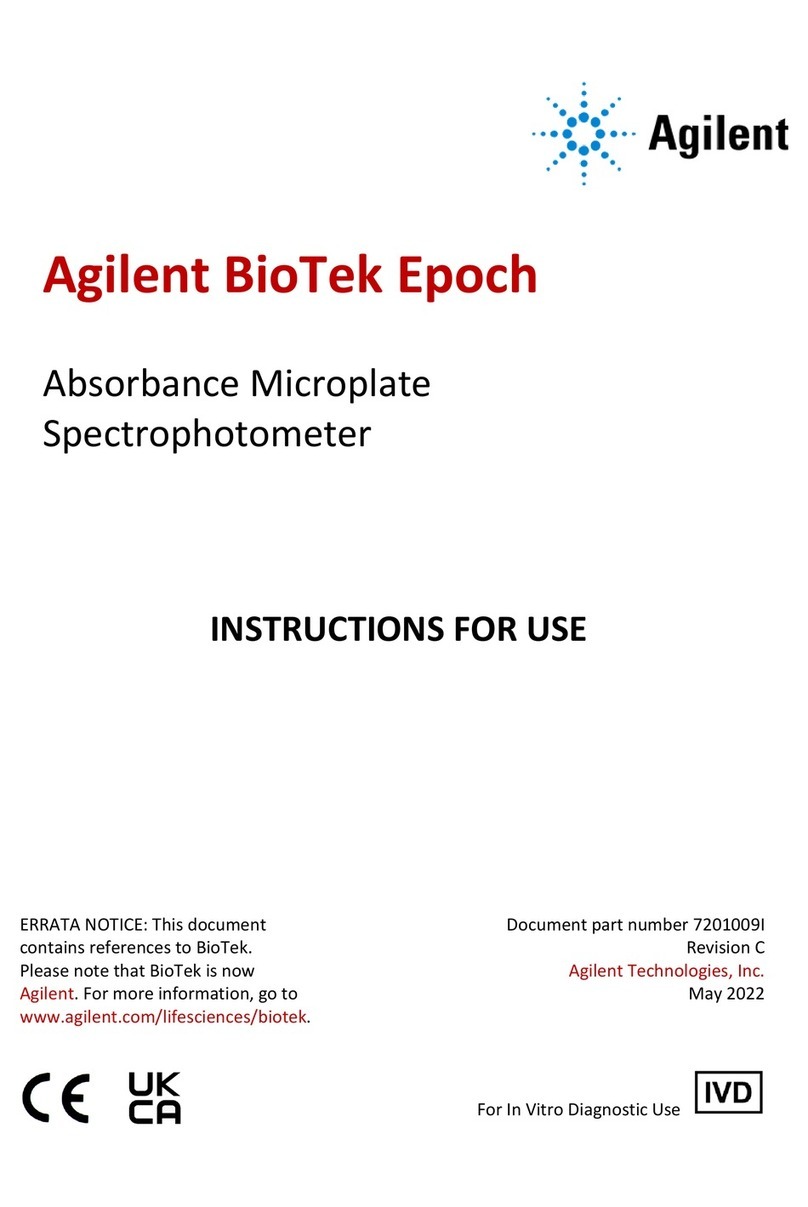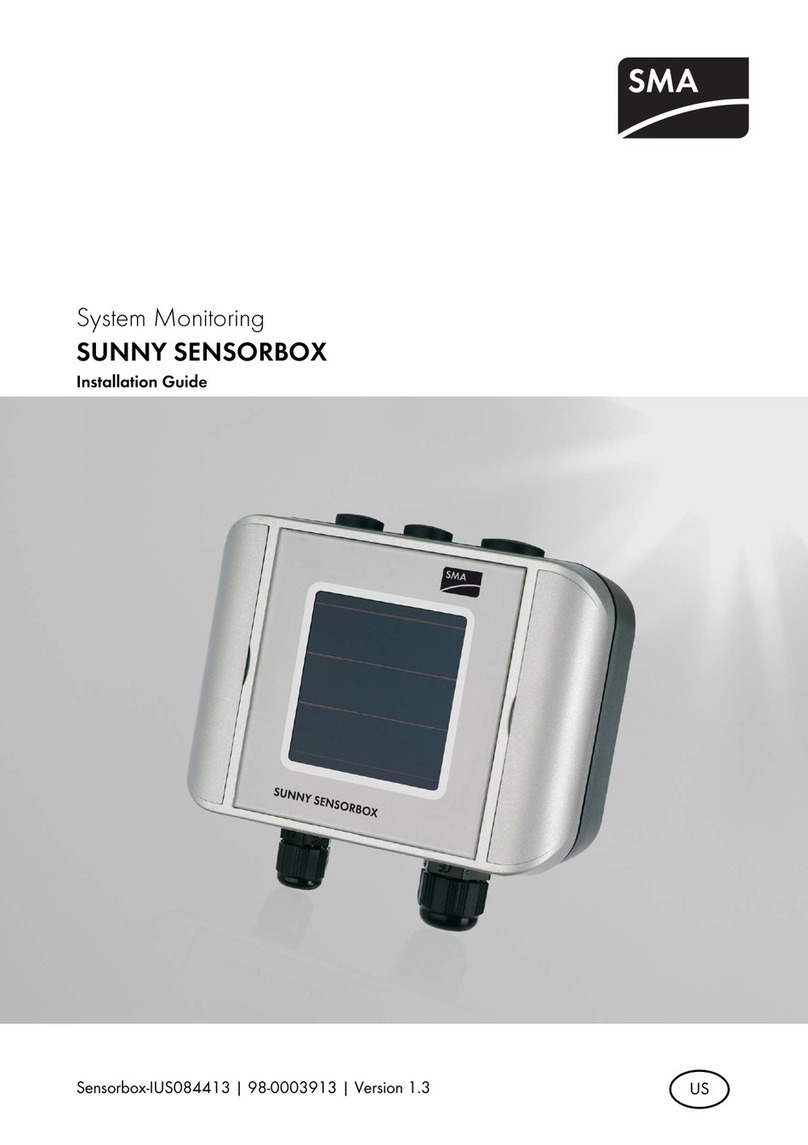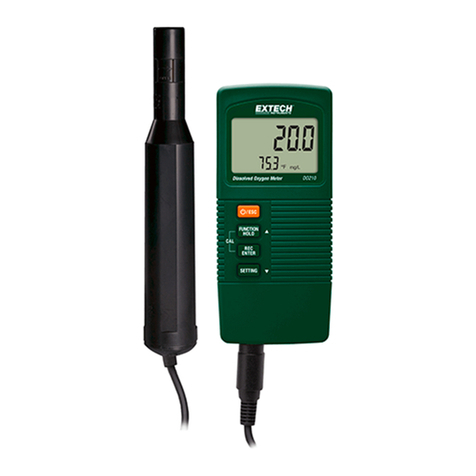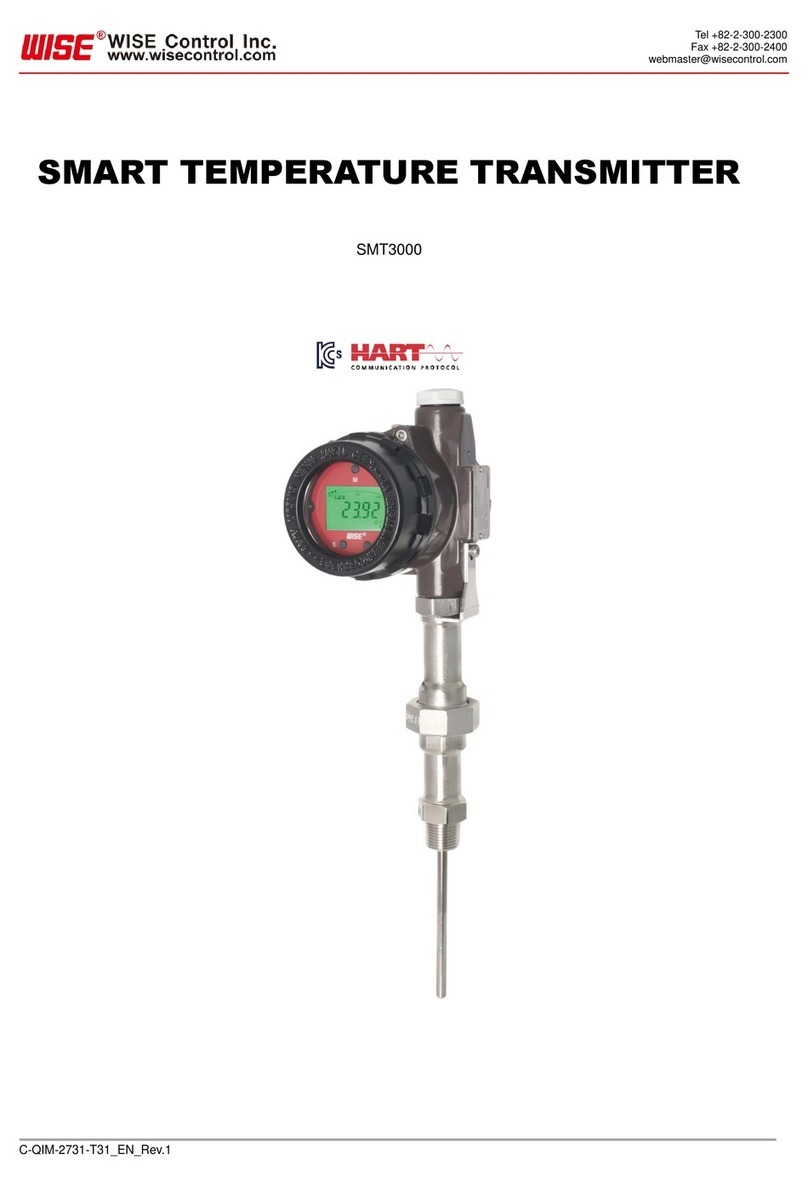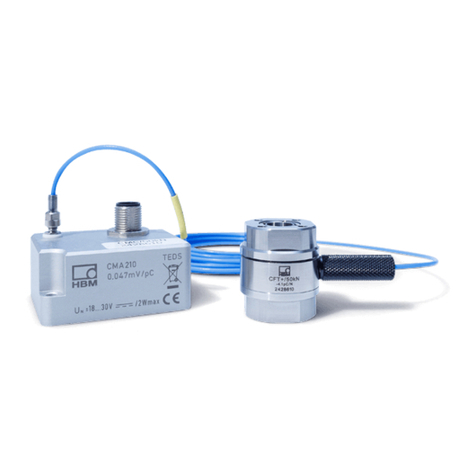Den-Mat SOL User manual

SOL. Everything you want in a laser.
Call DenMat at 800.445.0345 or visit DenMat.com.
©2013 DenMat Holdings, LLC. 1017 W. Central Ave., Lompoc, CA 93436 USA823057299 04/13 DO

INSTRUCTIONS FOR USE
MODE D’EMPLOI
INSTRUCCIONES DE USO
GEBRAUCHSANWEISUNG
INSTRUÇÕES DE USO
ISTRUZIONI PER L’USO
ИНСТРУКЦИЯ ПО ЭКСПЛУАТАЦИИ
INSTRUKCJE UŻYCIA
KULLANMA TALİMATLARI

1.5
1.4
1.3
1.2
1.1
1.6
1.7
1.8
1.9
1.10
1.11
1.12
1.13
1.2

3.0
2.0
4.4 5.0 6.0
7. 0 8.0
4.2 4.1
4.3
4.4
4.5
4.6
4.0

ENGLISH
FRANÇAIS
ESPAÑOL
DEUTSCH
PORTUGUÊS
ITALIANO
РУССКИЙ
POLSKI
TÜRKÇE
1
14
28
42
56
70
83
94
109
122
135
149

11
TABLE OF CONTENTS
SECTION PAGE
A. INTRODUCTION 2
B. WARNINGS AND PRECAUTIONS 2-3
Emergency Termination of Laser Emissions
C. INDICATIONS FOR USE 3
D. FACILITY AND ENVIRONMENTAL
CONSIDERATIONS 3-4
Power requirements
Heating and Ventilation
Lighting
Combustible Chemicals and Gases
Plume Evacuation
Operatory Access during SOL Laser Use
E. GENERAL SAFETY 4
General Safety Considerations
Eye and Skin Protection
Table 1: NOHD (inches/cm)
Emergency Shutdown Options
F. INSTALLATION AND SETUP 5-6
Instructions on Unpacking &
Customer Service Assistance
Shipping Container Information
Contents of SOL Laser Shipping Container
Laser Hand Piece and Fiber
Fiber Wrap
Key Switch
AC/DC Power Supply Connector
Power On/Off Switch
Foot Switch Connector
Remote Interlock Connector
G. QUICK START INSTRUCTIONS 6
SOL Quick Start Instructions
SECTION PAGE
H. CONTROLS, OPERATION & USE 6-8
SOLSmart Presets
SOL Default Mode When the System is Turned On
SOL Presets
Ready (SOL Activation)
Pulse Mode
Beeping Volume
Aiming Beam
Emergency Stop
Remote Door Interlock
Battery Power
Operating Modes
Continuous Wave Mode
Tissue Response to Laser Energy
Installing and Replacing Single-Use Fiber Optic Tips
Initiating the Fiber
Cleaning Instructions
I. RECOMMENDATIONS FOR USE 8-10
Contraindications
Hard Tissue Procedures
Calibration
Single Use Tips For Infection Control
Checking Fiber Continuity
Test Firing the SOL Diode Laser
Using the SOL Diode Laser
J. DENMAT HOLDINGS, LLC SYSTEM
SPECIFICATION 10
Complies with
Hand Piece
Fiber Optic Tips
Accessories
K. SOL LASER SPECIFICATIONS 10
No Visible Light or Diffuse Light
Transmitted By The Aiming Beam
Replacing The Main Fiber
All Other Conditions
Send returns to
L. SOL SERVICE & TROUBLESHOOTING 10-12
No Visible Light – Aiming Beam
Replacing the Battery
Replacing the Fiber Optic Handpiece
All Other Conditions
Returns
M. SYSTEM WARRANTY 12-13

2
FIGURE 1.0 PANEL BUTTONS
1.1 CUSTOM Programmable favorite setting.
Default CW 1.5 Watts
1.2 STERILE Programmable favorite setting for the
treatment of apthous ulcers and periodontal
pockets. Default preset Pulse 1.5 Watts
1.3 PERIO Programmable favorite setting for
debridement. Default preset CW 0.4 Watts
1.4 CUT Programmable favorite setting for fast cutting.
Default preset CW 1.2 Watts
1.5 EMERGENCY STOP Turns active laser
output OFF
1.6 BATTERY Charge level indicator (Green, Amber,
Red) flashes when battery is charging
1.7 DISPLAY Laser power level indicator
1.8 UP Adjusts laser power up by 0.1 watts
1.9 DOWN Adjusts laser power down by 0.1 watts
1.10 READY with LED Indicator – toggles between
Standby and Laser Ready Modes
1.11 PULSE Mode with illumination. Toggles between
CW and Pulse modes
NOTE: system defaults to Continuous Wave mode
(not illuminated)
1.12 AUDIO Mutes audio. Toggles between audio
On/Off
1.13 AIMING BEAM Adjusts blue aiming beam
brightness up and down
NOTE: Preset labels are not intended to imply diagnosis or
treatment of oral disease.
A INTRODUCTION
The SOL Laser unit is a dental soft-tissue laser surgical/
debridement device. The SOL Laser may be used for a
variety of soft-tissue, gingival modification, and sulcular
therapy procedures.
Safety is paramount when using any energy-based surgical
instrument and your office should implement a safety
program for the SOL Laser. If your office does not already
have a safety officer, one should be appointed to be
responsible for understanding proper use, safe operation,
and maintenance of the SOL Laser system. Their duties
should include training office personnel in all aspects of
system safety and management of the SOL Laser and
all accessories.
MANUFACTURER’S LASER IDENTIFICATION,
OUTPUT AND STANDARDS LABEL
The SOL Laser carries the Manufacturer’s identification
label affixed to the bottom panel of the Control Module.
2
B WARNINGS & CAUTIONS
MODEL: ASSY SOL LASER
ITEM #: 033989100
LOT #:
MANUFACTURE DATE:
MANUFACTURED BY: DENMAT HOLDINGS, LLC
LOMPOC, CA 93436 USA
LASER CLASSIFICATION (PER IEC/EN 60825-1:2007): Class 4
MAXIMUM LASER OUTPUT: 3W CW; 5W P
FREQUENCY IN PULSED MODE: Fixed, 10Hz
PULSE DURATION: 0.05 seconds
WORKING BEAM WAVELENGTH: 808 nm (+5 nm)
AIMING BEAM WAVELENGTH: 405 nm (+10 nm) CW
POWER INPUT: 30 Watts + 12 VDC supplied from
100-240 VAC 50-60 Hz Model FW7362M/12
COMPLIES WITH IEC 60601-1, IEC 60601-2-22;
IEC/EN 60825-1:2007; IEC 60601-1-2, CLASS B PER
EN 60601-1-2 AS WELL AS TO US FEDERAL
REGULATIONS FOR LASER PERFORMANCE
STANDARDS SET OUT IN 21CFR 1040.10 AND
1040.11 EXCEPT FOR DEVIATIONS PURSUANT
TO LASER NOTICE 50 DATED JULY 26, 2001.
001374700 02/13
Attention, consult Accompanying Documents
m
Caution: US Federal Law restricts the use of this device to use by or on the order of a dentist
Caution: Use of controls or adjustments, or performance of procedures other than
those specified herein may result in hazardous radiation exposure.
Warning: Laser Safety Eye Protection MUST BE WORN by the
Operator, Patient, Assistant, and anyone present when the laser is
activated. Eye Protection must conform to Specification DIN EN207
Annex II of the Directive 89/686/EEC with optical density in 800nm-
818nm of OD 4+ such as NoIR Laser Company filter model DII
Warning: Do not use in the presence of combustible or combustion
supporting gases
Warning: Do not use in the presence of supplemental therapeutic
oxygen supplies
Warning: Always test activate the device outside the mouth before
using on a patient.
Visible and Invisible Laser Radiation – Avoid eye or skin exposure to
direct or scattered radiation
CLASS 4 Laser Product
Above Warning is affixed to front panel of SOL.
Symbol for: Laser aperture at the end of the handpiece
Laser aperture warning label affixed to system hand-piece cradle.
m

3
EMERGENCY TERMINATION OF LASER EMISSIONS
The SOL Laser has been designed with several methods to
terminate emission of laser energy in emergency situations.
These methods include an emergency shutoff switch, a key
switch and a power switch.
C INDICATIONS FOR USE
The SOL Laser is intended for use by dental
professionals in the treatment of dental patients
for a variety of oral soft tissue procedures.
The SOL Laser is not intended for hard tissue procedures.
The SOL Laser is indicated for use in dental intraoral
soft tissue general, oral maxilla-facial and cosmetic
surgery including ablating, incising, excising, vaporizing
and coagulation of soft tissues using a fiber optic
delivery system.
INDICATIONS INCLUDE:
• Excision and incision biopsies
• Hemostatic assistance
• Treatment of aphthous ulcers
• Gingival incision and excision
• Gingivectomy
• Gingivoplasty
• Gingival troughing
• Gingival recontouring
• Tissue retraction for impressions
• Oral papillectomy
• Sulcular debridement
• Sulcular tissue removal
• Removal of granulation tissue
• Frenectomy
• Frenotomy
• Abscess incision and draining and excision
• Operculectomy
• Removal of fibromas
• Soft tissue crown lengthening
In addition to receiving proper training in the use of
dental lasers, users should be familiar and experienced
with these procedures using electrosurgical devices or
traditional instruments before performing them on patients
with the SOL Laser. Non-experienced users should seek
appropriate training guidance before attempting clinical
treatments with the SOL Laser system.
D FACILITY & ENVIRONMENTAL
CONSIDERATIONS
In order to insure the safe use of the SOL Laser in your fa-
cility, please check to make sure that the proposed location
is compatible with the specifications listed below.
POWER REQUIREMENTS
External AC/DC Power Supply:
Input Power - 110 – 120 VAC @ 60 Hz 700mA; 220-
240 V AC @ 50Hz 350mA
Output Power – 30W + 12 VDC at 2.5A maximum
HEATING AND VENTILATION
The optimal temperature range of 20º - 30ºC (68º - 86º
F). Avoid storing or transporting the lasers in temperatures
below 0º Celsius (32º F).
COMBUSTIBLE CHEMICALS AND GASES
All gases that are combustible or support combustion and
are used in the operatory area where the SOL Laser is
being operated must be turned off during the procedure.
Cleaning supplies or other flammable chemical compounds
should be stored in an area away from the surgical site
in order to avoid possible combustion. Do not use in the
presence of supplemental therapeutic oxygen supplies for
patients with respiratory or related diseases.
PLUME EVACUATION
Plume evacuation should be addressed when vaporizing
tissues. A high volume vacuum system should be used and
0.1 micron or less high filtration masks that are suitable for
virus and bacterial control should be worn by clinicians.
OPERATORY ACCESS DURING SOL LASER USE
Access to the treatment area should be restricted while the
lasers are in use. A sign indicating “LASER IN USE” should
be placed in a designated area adjacent to the treatment
area entry location.
3

4
EGENERAL SAFETY WITH THE
SOL LASER
GENERAL SAFETY CONSIDERATIONS
Safe use of the SOL Laser is the responsibility of the entire
dental team including the doctor, any system operators and
the dental office safety officer.
Electromagnetic Environment Guidance
(Class B (CISPR 11:2009), Group 1 per
IEC 60601-1-2, sub-clause 6.8.3.201)
The SOL Laser uses RF Energy only for its internal
function. Therefore, its RF emissions are very low and
are not likely to cause any interference in nearby electric
equipment.
Floors should be wood, concrete, or ceramic tile. If floors
are covered in synthetic material, the relative humidity
should be at least 30%
Mains power quality should be that of a typical
commercial or hospital environment. The SOL Laser
does not require continued operation during power mains
interruptions, merely it is recommended that the SOL
Laser should be powered from an uninterruptible power
supply (UPS) or its battery.
Power Frequency Magnetic Fields should be at levels
characteristic of a typical location in a typical commercial
or hospital environment.
EYE AND SKIN PROTECTION
While the SOL Laser is in use, doctors, system operators,
auxiliary staff, patients, and anyone in the operatory must wear
the appropriate safety eyewear that has been designed for
use with the 800-plus nm wavelengths associated with lasers.
Eye protection must conform to Specification DIN EN207
Annex II of the Directive 89/686/EEC with optical density of
OD+4 for the wavelength range of 800nm-818nm such as
NoIR Laser Company filter model DI1.
Nominal Ocular Hazard Distance (NOHD) is the distance
from the source of laser emission to the point where it no
longer exceeds its Maximum Permissible Exposure (MPE
– highest level of laser radiation to which a person may be
exposed without hazardous effects or adverse biological
changes in the eyes or skin). The Nominal Hazard Zone
(NHZ) is the space within which the level of direct, reflected,
or scattered radiation during normal operation exceeds the
appropriate MPEs. The outer limit of the NHZ is equal to
the NOHD. The NOHD for persons wearing recommended
safety glasses is shown in Table 1 below.
TABLE 1: NOHD (INCHES/CM)
Radiation
Source MPE mW/
cm2Divergence
Angle Without
Eye
Protection
With
Recommended
Eye Protection
Fiber
Optic Tip
(direct)
1.66 9° (+/- 1°) 155/393.7 1.55/3.94
Reflected
from
Tissue
1.66 n/a 0.25/0.63 0.0025/0.0063
Never point the SOL Laser tip directly at the face, eyes or
skin of anyone while emitting energy.
EMERGENCY SHUTDOWN OPTIONS:
Perform any of these actions to terminate laser
emissions in the event of a real or perceived
emergency:
• Depress the emergency “STOP” button (Fig. 1.5)
• Remove your foot from the foot switch
• Press the “Ready” button (Fig. 1.10)
• Turn the key counterclockwise to the “OFF” position
• Switch the power switch to the “OFF” position
• Remote interlock open circuit deactivates laser
4
Wavelength:808nm
Max Output Power:3W CW,5W Pulse
Pulse Duration:0.05 seconds
LASER PROTECTIVE EYEWEAR REQUIRED
CLASS IV LASER PRODUCT
DANGER
LASER RADIATION.AVOID EYE OR SKIN
EXPOSURE TO DIRECT OR SCATTERED
RADIATION.

5
FINSTALLATION AND SETUP
INSTRUCTIONS ON UNPACKING &
CUSTOMER SERVICE ASSISTANCE
A DenMat customer service representative or dealer
can provide assistance when you are ready to remove
the SOL Laser from its shipping container. Please do
not attempt to unpack the SOL Laser and install or
setup the unit without reading this manual first. If you
are unsure about any aspect of the assembly, call your
DenMat customer service representative or dealer for
assistance.
SHIPPING CONTAINER INFORMATION
The shipping container you received with your SOL Laser
was specially designed to safely transport the laser. In the
unlikely event that you need to return the laser for service
or repair, please retain the original shipping container.
CONTENTS OF SOL LASER
SHIPPING CONTAINER:
The contents of the shipping container should
include the following:
• SOL Diode Laser System with Handpiece and Optical Fiber
• SOL Foot Switch
• AC/DC Power Converter
• Laser Operating Key
• Fiber Optic Tips, 400 Micron/5 pc
• Single-use Barrier Sleeves for Handpiece 25 pc
• Protective Glasses 3 pc
• Safety Sign
• SOL Laser Instructions
• Warranty Information
• Extended Warranty Offer
• Online Training Offer
• Battery Charging Notice
Each of the items listed above should be inspected and the
instructions followed. Use of any cables or accessories not
supplied with the system, or by DenMat, may damage the
system and will void the warranty.
LASER HAND PIECE AND FIBER (Fig. 2.0)
The detachable hand piece and fiber are installed and ready
for use at the time of shipment. Uncoil the fiber and install a
SOL procedure tip into the hand piece. Proper use of
the system tips and fiber replacement is explained later in
this manual.
FIBER WRAP (Fig. 3.0)
A fiber wrap is provided to protect and store the system
fiber when not in use. Gently extend the fiber by
unwrapping clockwise and return in the counterclockwise
direction. TO AVOID DAMAGE TO THE FIBER, do not
bend at sharp angles or in a radius smaller than the internal
diameter of the fiber wrap.
KEY SWITCH (Fig. 4.1)
A removable key switch is provided as a safety feature to
prevent the unauthorized operation of the laser. It is the
responsibility of the laser safety officer to maintain control
of the key switch and store it in a secure location when
the laser is not in use. The key switch must be turned
clockwise to the ON position to power the system controls
and activate the laser.
AC/DC POWER SUPPLY CONNECTOR (Fig. 4.2)
USE MODEL FW7362M/12 ONLY. An external power
supply is provided for charging the system battery and an
alternate laser power source. During initial setup use the
AC/DC power supply for up to four hours to fully charge
the battery. Note the Battery Charge Level indicator (Fig 1,
Item 6) on the system control panel, flashes to confirm that
the power supply is connected and the battery is charging.
NOTE: battery does not charge when the system is in
the Ready Mode or during laser activation so Charge
Indicator does not flash. Plug the power supply into an
AC outlet and connect to the corresponding connector on
the rear of the system. Only use the SOL Power Supply.
Others may damage the system.
POWER ON/OFF SWITCH (Fig. 4.3)
The power switch is located on the rear of the system and
must be in the ON position for the laser to be operated.
Turn the power switch to the OFF position when the laser is
not in use.
5
NOTE: Avoid Exposure–Laser Radiation is emitted from this aperture.

6
FOOT SWITCH CONNECTOR (Fig. 4.4)
The foot switch is used to activate the laser. Install the plug
on the foot switch cable to the corresponding connector on
the rear of the system.
PORT FOR FUTURE EXPANSION. DO NOT USE
(Fig. 4.5)
REMOTE INTERLOCK CONNECTOR (Fig. 4.6)
The remote interlock is used to turn the laser OFF when
the door into the room is opened. Remote interlock
operation requires a Door Interlock Switch (not included)
to be purchased from a local electronics store. This
function is explained fully under Remote Door Interlock.
GQUICK START INSTRUCTIONS
SOL QUICK START INSTRUCTIONS
During initial setup use the AC/DC power supply for
up to four hours to fully charge the battery. Plug the
power supply into an AC outlet and connect to the
corresponding connector on the rear of the system.
1. Plug the foot switch into the connector on the rear of the system.
2. Insert the key switch and turn to the ON position.
3. Turn the power switch to the ON position.
4. System powers up to default Standby Mode 0.8 Watt CW laser setting
5. Option: Adjust Power using Up and Down Arrow keys
6. Option: Enter Pulse Mode by pressing Pulse key
7. Option: Select one of four system presets with the corresponding key
8. Option: Adjust the preset as described in 5 and 6 above
9. Press Ready and note audio and visual indicator confirmations
10. Use the foot switch to activate the laser
HCONTROLS, OPERATION & USE
SOL SMART PRESETS (Fig. 1.1-1.4)
SOL is delivered with five laser output settings programmed
into the Default Mode when the system is turned
ON and Four Preset Procedure Keys; Cut, Sterilize,
Periodontal and Custom. These settings are typical for the
corresponding procedures with a diode laser. All five can be
reprogrammed with your favorite CW output from .10 to 3.0
watts in .10 watt increments or Pulse output from .10 to 5.0
watts in .10 watt increments. The Default Mode when the
system is turned ON provides the fastest way to start lasing.
After turning the system ON use the default power setting,
6
or adjust, press READY and start lasing. SOL is smart and
remembers the last mode (CW or Pulse) and power setting
so the next time the system is powered up it returns to your
most commonly used or Favorite Setting.
SOL DEFAULT MODE WHEN THE SYSTEM
IS TURNED ON
When the system power and key switches are placed to
the ON position SOL system controls default to the factory
preset Standby Mode 0.8 Watt CW laser setting. If the
laser settings are changed the SOL will “remember” those
settings upon exiting and they will become the default for
the next session until changed again. Each subsequent
change in settings becomes the new default. Adjust the
laser CW power Up/Down using the Up or Down arrow
keys select the Pulse Mode and adjust laser power Up/
Down or enter one of four system presets to begin lasing.
Press the Ready key to enter the Ready Mode. Press the
Foot Switch to activate the laser. Return to the original
default, or any other setting, by entering those settings.
SOL PRESETS
See 1.1-1.4
The laser power and output modes, CW and Pulse, for four
typical diode laser procedures are loaded into four button
selections labeled Cut, Sterile, Perio and Custom. Default
settings are as follows:
PRESET POWER DELIVERY MODE
Cut 1.2 Watts Continuous Wave (CW)
Sterile 1.5 Watts Pulse
Perio 0.4 Watts Continuous Wave (CW)
Custom 1.5 Watts Continuous Wave (CW)
Press any key to select that preset. When the preset is
selected the laser power setting, (in watts), is displayed
and the Pulse Mode illumination is ON if Pulse has been
programmed for that preset. The laser power can be
adjusted with the Up and Down Arrow keys. Pulse and
CW can be selected by pressing the Pulse On/Pulse Off
key. When the system is in the Pulse Mode the Pulse Icon
(1.10) next to the key illuminates alerting the operator
that the Pulse Mode is active. Changes to the laser output
and CW/Pulse modes can be saved as a new preset by
pressing and holding down the key for 3 seconds. If new
settings are not saved (programmed) into the preset by
holding the key for 3 seconds the original default settings
will be retained upon exiting.

7
READY (SOL ACTIVATION)
(See Fig. 1.10)
The system powers up in the Standby Mode and returns
to Standby each time any key is pressed except READY.
The laser cannot be activated in the Standby mode. The
READY key, in either the CW or Pulse modes, prepares
the system for laser activation. When the READY key is
pressed there is an audio alert, unless audio is muted (see
audio function), and the Ready indicator LED illuminates
Green. The blue aiming beam is visible at the end of the tip.
The system is ready for laser activation. When the system
is in READY status pressing any key, other than the foot
switch, will return the system to the Standby Mode. When
the foot switch is pressed in the Ready Mode the Ready
Indicator LED flashes to provide a visual indication that the
laser working beam is On.
PULSE MODE
The system Default Mode and Presets (except Perio) are
programmed for CW laser delivery. The CW setting can
be changed to Pulse for the Default Mode and Presets by
pressing the Pulse key. When the Pulse key is pressed the
Pulse Icon next to the key illuminates alerting the operator
that the Pulse Mode is active. If the laser delivery is changed
from CW to Pulse and saved as the Default Mode or a Preset
the icon will illuminate each time that mode is used (until it is
changed back to CW). SOL pulse is 10Hz 50% Duty Cycle.
AUDIO ON/OFF
The Audio key toggles the system sound On and Off.
AIMING BEAM
The brightness of the blue aiming beam is preset. It can be
controlled by pressing the brightness key. Each time the
key is pressed the brightness is increased and the selected
level is displayed; A0 through A5.
EMERGENCY STOP
SOL can be immediately deactivated in any mode, at
any power setting by pressing the STOP key. To reset the
system, press and hold the STOP key for 5 seconds.
REMOTE DOOR INTERLOCK (DOOR INTERLOCK
SWITCH IS NOT INCLUDED)
The SOL diode laser provides a remote interlock feature
(see 4.6) that enables a clinician to establish a laser
treatment room with a remote interlock connector/
switch on the entrance door that is electronically wired
to the system. When the door to the room is opened the
connector/switch provides an electrically open circuit that
deactivates laser emissions. The door must be closed with
connector/switch providing an electrically closed circuit,
with a manual reset by entering the Ready Mode, required
to resume laser activation.
To use the remote interlock feature, an interlock connector/
switch, cable and connector can be purchased from a
local electronics store. Contact your DenMat account
representative for an assembly drawing a list of parts
required to use this feature.
BATTERY POWER
The Battery Charge Indicator changes color to represent
the battery capacity.
Green – 100% to 40%
Amber – Less than 40%
Red – Less than 20%
The battery should be recharged when the indicator turns
amber. A long procedure should not be started when the
indicator is red unless the external power supply is installed.
NOTE: Charge Indicator flashes when the external power
supply is connected and the battery is charging.
Battery does not charge when the system is in the Ready
Mode or during laser activation so Charge Indicator does
not flash.
OPERATING MODES
Pulsed (P) “temporal emission mode” (time related mode).
Selection of the appropriate mode will allow the operator
to optimize control of target tissue temperatures and the
efficiency of energy delivered. The pulse duration (0.05
seconds) and the number of pulses per second (10) is
fixed and not adjustable. Therefore, the operator will need
to adjust only the laser power and mode.
CONTINUOUS WAVE MODE
The CW mode is generally the fastest way to ablate tissues
but heat can build up and cause collateral damage to
adjacent tissues. Cool the tissues being treated by using
periodic blasts of air from a triplex syringe and highspeed
suction. You may also use water to cool in areas where
there is prolonged laser exposure. Avoid using the air
syringe when you have an opening in soft tissue adjacent
to or within the surgery site, as an air embolism may occur
resulting from air captured within the tissue during the
cooling process.
7

8
TISSUE RESPONSE TO LASER ENERGY
Maximum results will be achieved by regulating the power
and the speed that the operator moves the Fiber Optic Tip.
Tissue charring is an undesirable after-effect of too much
power, or of the tip moving too slowly. Always use the
least amount of power that is required to complete
your procedure. The ideal tissue response will show little
or no discoloration after treatment and will result in less
residual damage and faster healing. Avoid penetrating or
damaging the periosteum, and do not attempt to use the
laser on alveolar bone. Because the 808 nm laser energy
is attracted to melanin and hemoglobin, power must be
reduced when treating patients with darker soft tissue.
Always begin with the lowest power you can use to
remove or modify target tissue.
INSTALLING AND REPLACING
SINGLE USE FIBER OPTIC TIPS (Fig. 5.0)
The Fiber Optic Tips conduct laser energy from the laser
diodes to the tissues. These fibers are made of silica with
a polymer cladding. Note that there are potential hazards
when inserting, steeply bending, or improperly securing
the Fiber Optics to the hand piece. Failure to follow these
recommendations may lead to damage to the Fiber or
delivery system and/or harm to the patient, staff, or laser
operator.
The Fiber is relatively flexible, but can be broken if bent
at an angle that is too sharp or a radius that is too small.
Protein debris from gingival tissue accumulates on the
fiber during surgery and the extreme heat that develops
will deteriorate the Tip. Fibers can fracture if a blackened
area greater than 3 - 4 mm develops. This is especially
important when using the LASER for periodontal pocket
debridement. Stop lasing and regularly wipe off the tip
with a 2 x 2 gauze sponge that has been wet with water
to avoid the accumulation of protein debris. Do not use
flammable solvents such as alcohol when cleaning a
hot tip. The Fiber Optic Tips are designed so that they
typically won’t need to be stripped or cleaved. Replace
the disposable, single-use tip as necessary and for each
new patient. The disposable, single-use Fiber Optic Tips
are provided in a sealed package. Each Fiber Optic Tip
contains a pre-cleaved, pre-stripped piece of Fiber. They
are designed for single-use only and must be discarded
after use. Confirm the integrity of the package before
use; if damaged, do not use. Special care should be taken
not to break or snap the fiber when removing tips from
packaging. Do not touch the ends of the Fiber. Re-using
Fiber Optic Tips will greatly increase the chance of patient-
to-patient infection. Dispose of used FiberOptic Tips in a
Sharps Container. Confirm that the unit’s Key Switch is
turned to ‘OFF’ when changing Fiber Optic Tips. To install
a new tip, hold the collar of the tip between your thumb
and forefinger, align the metal end of the fiber with the
handpiece receptacle and firmly press the Tip onto the
handpiece. To remove a worn Fiber Optic Tip, gently grip
the tip body between forefinger and thumb and pull it
directly out of the handpiece.
INITIATING THE FIBER (Fig. 6.0)
Some procedures call for the Fiber tip to be ‘initiated.’
‘Initiation’ prepares the tip of the Fiber to retain heat by
fusing a thin layer of pigment on the end. The easiest way
to initiate a tip is by lightly moving the end of the Fiber
across a piece of articulating paper with the unit set to 1W
CW (see below). The tip will retain pigment from the paper
and will glow. Do not exceed contact time of 1 second.
CLEANING INSTRUCTIONS
The SOL Diode Laser handpiece and fiber cord should
be cleaned using a liquid disinfectant similar to BIREX or
CIDEX. Do not spray disinfectant directly onto the handpiece
as ingress of liquids may damage internal components. Apply
with a damp gauze sponge or wipe. Wear gloves and observe
all other safety precautions and infection control procedures.
IPROCEDURAL
RECOMMENDATIONS FOR
USING THE SOL LASER
Following procedure guidelines are provided as a guide
only and have been developed based on information
provided by experienced laser users and educators.
Always review the patient’s history to evaluate possible
contra-indication for use of local anesthesia or other
complications. All clinical procedures performed with the
SOL Diode Laser must be subjected to the same clinical
judgment and care as with traditional techniques. Patient
risk must always be considered and fully understood before
clinical treatment. The clinician must completely understand
the patient’s medical history prior to treatment.
CONTRAINDICATIONS
Exercise caution for general medical conditions that might
contraindicate a local procedure. Such conditions may
include allergy to local or topical anesthetics, heart disease,
lung disease, bleeding disorders, and immune system
8

9
deficiency, or any medical conditions or medications that
may contraindicate use of certain light/laser type sources
associated with this device. Medical clearance from patient’s
physician is advisable when doubt exists regarding treatment.
HARD TISSUE PROCEDURES
The SOL Laser is not indicated for hard tissue procedures.
The SOL Diode Laser is attracted to melanin, hemoglobin
and to some extent to water. Avoid prolonged exposure of
the energy when working in and around the cervical areas
of the tooth. Due to the thin layer of enamel in this area,
energy may be absorbed by the hemoglobin in the pulp
and pulpal hyperemia may occur. Extended exposure to
such energy could cause patient discomfort and even lead
to possible pulpal necrosis.
CALIBRATION
The SOL Laser uses solid-state circuitry to continuously
monitor power output and adjusts the power supplied to
the laser diode to maintain the output at the user defined
setting. If the output levels are more than ± 20% of the
set value, the unit will shut off power to the laser diode
and provide an Error Message Alert to the operator. If
this happens, the unit should be turned off and allowed
to sit for about five (5) minutes, then turned on again. If
the laser performs when retried, the microprocessor has
been able to make adjustments and the unit will function.
If the unit fails to fire when retried, the device will need to
be sent for re-calibration by DenMat Service Department.
Recalibration is recommended at a minimum of
one time per year based on average usage. The
SOL may be returned to DenMat Service Department for
recalibration. Alternatively, a calibrated laser power meter,
approved for use with 810 nm laser devices, may be
purchased to check laser output power. The power meter
will also need to be calibrated at recommended intervals.
SOL output should be checked at 0.5, 1.0, 2.0, and 3.0
watts. The power meter display should be within 20% of
the meter reading. If not, replace the fiber tip. If the output
is outside the 20% tolerance the system must be returned
to DenMat Service Department for recalibration. The
SOL system cannot be recalibrated by the user or service
contractor and this must not be attempted.
SINGLE USE TIPS FOR INFECTION CONTROL
Fiber Optic Tips are designed for single-use only and must
be changed between patients. See Section “Installing
Single-Use Fiber Optic Tips” (page 8) for details.
CHECKING FIBER CONTINUITY
Prior to test firing and tip Initiation, illumination from the
SOL aiming beam can be used to verify that there are no
cracks or breaks in the system main fiber or single use tips.
During this procedure use caution to prevent accidental
activation of the working beam with the foot switch. It is
recommended that the foot switch is unplugged to prevent
laser activation. While in any system Preset or Default
Mode press the Ready key to activate the aiming beam.
Place the distal end of the fiber perpendicular to and
about 5mm-10mm distance from a piece of white paper.
Visible light should be transmitted from the tip and a well
formed and focused round spot should appear. If the spot
is diffused or not round in shape the single use fiber may
be defective. Replace it and try again. If the spot is still
diffused or not round in shape the system main fiber may
need to be replaced (see Service and Troubleshooting
page 10).Contact your DenMat Representative for
additional assistance.
The extent to which differences in the shape of the spot
will be noticed on tissue interaction is dependent on
any reduction in transmission. If the spot has a small
unfocused effect it may still work as expected or the fiber
might need to be replaced.
TEST FIRING THE SOL DIODE LASER
Always test-fire the SOL laser prior to using it intraorally.
Use the Power On default setting or select any of the four
presets. Press the Ready Key to enter the Ready Mode.
Press the foot switch to activate the working beam for
1 - 2 seconds while aiming the fiber tip onto a 2 x 2 gauze
sponge moistened with water. DO NOT USE ALCOHOL
OR OTHER FLAMMABLE LIQUIDS TO WET THE
SPONGE. Tip Initiation See section “Initiating the Fiber” for
guidance. Not all soft tissue procedures require an initiated
tip or contact with tissue. Those procedures that do not
require contact will use a Fiber Optic Tip that has NOT
been initiated, because to be effective in non-contact
mode, laser energy must flow unimpeded from the tip.
9
Good
Fiber
Bad
Fiber

10
USING THE SOL DIODE LASER
Before using the SOL Diode Laser for patient treatment, it is
recommended that a sanitary, disposable single-use Barrier
Sleeve be placed over the handpiece to reduce the chance
for patient-to-patient cross-contamination. Barrier Sleeves
are SINGLE USE ONLY. Reusing these sleeves will greatly
increase the chance of patient-to-patient infection. Safely
dispose following use. Contact your DenMat representative
for replacement packages of Barrier Sleeves.
When using the SOL Diode Laser in contact with tissue
make short quick brush strokes in light contact at the lowest
power setting that will remove the target tissue. Remove
debris that collects on the fiber tip with a clean 2 x 2 gauze
sponge moistened with water. DO NOT USE ALCOHOL OR
OTHER FLAMMABLE LIQUIDS TO WET THE SPONGE.
When the laser is not in use and when the procedure has
been completed, press the Ready Key to return to the
Stand-By Mode.
Turn the Key Switch counterclockwise to the “OFF” position
remove and store in a safe and secure location when the
laser is not in use.
Turn the rear Power Switch to the “OFF” position
to conserve battery power.
Record the Power settings and total procedure times used
for each procedure in the patient’s chart.
JTHE DENMAT HOLDINGS, LLC
SYSTEM SPECIFICATION
THE SOL LASER IS CLASS II
SOL Laser relies upon having two layers of insulation
surrounding live parts or by having reinforced insulation to
prevent electric shock.
THE SOL LASER IS TYPE BF
BF As type B but with isolated or floating (F – type)
applied part or parts.
CLASSIFICATION AGAINST FLAMMABLE
VAPORS WITH AIR
SOL Laser is NOT suitable for use in the the presence of
Flammable Anaesthetic Mixture with Air, Oxygen or
Nitrous Oxide.
KSOL LASER SPECIFICATIONS
Laser Classification: Laser diode Class 4 laser device
(per IEC 60825-1:2007)
Wavelength working beam: 808 nm +/- 5 nm
Beam divergence: 9° +/- 1°
Power range: 100mW to 3.0 Watts CW. 100mW to
5 Watts Pulse
Frequency (Pulsed): Fixed, 10 Hz
Continuous Wave (CW) Duty Cycle: Fixed 100%
Pulse Mode Duty Cycle: Fixed 50%
Aiming Beam Output: 2mW Maximum, adjustable
Audible signal: Yes, adjustable On/Off
Visual signal: Yes, adjustable
Power Supply: 30 Watts +12VDC supplied from
100-240VAC 50-60 Hz MODEL: FW7362M/12
Weight: 1.16 Kg
COMPLIES WITH
IEC 60601-1, IEC 60601-2-22; IEC 60825-1:2007; IEC
60601-1-2, Class B Per EN 60601-1-2 as well as to US
Federal Regulations for laser performance standards set
out in 21CFR 1040.10 and 1040.11 except for deviations
pursuant to laser notice 50 dated July 26, 2001.
HAND PIECE
Length: 12.1 cm
Diameter: 1.50 cm
Tip removal: Manual friction-fit
Sanitizing: Wipe with appropriate disinfecting solution
FIBER OPTIC TIPS
Type: Removable, Single-Use Disposable
Material: Fused Silica, coated
Size: 400 μm
Style: Polymer-clad fiber
ACCESSORIES
Sanitary, disposable single-use only Barrier Sleeve for
Handpiece
400 μm Single-Use ONLY Fiber Optic Tips
Contact DenMat Sales to order accessories.
LSOL SERVICE AND
TROUBLESHOOTING
Recalibration is recommended at a minimum
of one time per year based on average usage
(see Calibration page 9).
10

11
NO VISIBLE LIGHT OR DIFFUSE LIGHT
TRANSMITTED BY THE AIMING BEAM
Illumination from the SOL aiming beam can be used to
verify that there are no cracks or breaks in the system
main fiber or single use tips. Visible light should be
transmitted from the tip and a well formed and focused
round spot should be visible, (see page 9).
If there is NO VISIBLE LIGHT start by replacing the
single use tip. If there is still NO VISIBLE LIGHT this
is an indication that the system main fiber has been
damaged. See Replacing The Fiber Optic Handpiece in
the following section.
If the spot is diffuse or not round in shape, the single use
fiber may be defective. Replace it and try again. If the
spot is still diffused or not round in shape the system main
fiber may need to be replaced.
The extent to which differences in the shape of the
spot will be noticed on tissue interaction is dependent
on any reduction in transmission. If the spot has a small
unfocused effect it may still work as expected or the
fiber might need to be replaced.
REPLACING THE BATTERY (Fig. 7.0)
The following procedure is provided in the unlikely event
that the system battery needs to be replaced.
WARNING FOR BATTERY REPLACEMENT: Replace
battery ONLY with SOL Replacement Battery item
number authorized by DenMat. Use of a different battery
may present a risk of fire or explosion. Keep away from
children.
Charge battery only after it is properly installed in the SOL
system and only with the SOL AD/DC Power Converter
supplied with the system or Replacement SOL AC/DC
Power Converter item number authorized by DenMat.
CAUTIONS FOR PROPER BATTERY DISPOSAL: The
<100Wh Lithium Ion rechargeable battery used in the
DenMat SOL is recyclable and contains 0% mercury, 0%
lead, 0% cadmium.
Battery must be recycled or disposed of properly.
State and local regulations concerning the recycling and
disposal of Lithium Ion batteries vary so it is necessary
understand and remain in compliance with these
regulations when replacing the SOL system battery.
Please follow the disposal and recycle symbols on the
battery label to ensure that it is disposed of properly in
accordance with local laws and regulations.
The manufacturer of the battery pack is a member of the
Rechargeable Battery Recycling Corporation & the battery
bears the RBRC symbol which includes the phone number
to call to find your closest recycling location. The battery is
accepted for recycling at all RBRC locations throughout
North America. We encourage the use of recycling facilities
for our products. For more information on Lithium Ion
battery recycling:
In North America contact the Rechargeable Battery
Recycling Corporation (RBRC) at:
www.call2recycle.org or phone 1-877-2-RECYCLE
(1-877-273-2925)
In Europe contact the European Portable Battery
Association (EPBA). www.epbaeurope.net
INSTRUCTIONS:
DISCONNECT THE SYSTEM FOOT SWITCH USED FOR
LASER ACTIVATION.
VERIFY THE SYSTEM POWER AND KEY SWITCH ARE
IN THE OFF POSITION.
1) Place the system on its side as shown resting on a soft
towel to prevent scratching. Using a 3/32 size Hex Tool
remove four rubber feet from the bottom and remove the
battery access panel.
2) Remove the battery. NOTE: Replace with new battery
and attach bottom access panel.
REPLACING THE FIBER OPTIC HAND PIECE
(Fig. 8.0)
CAUTIONS FOR OPTICAL FIBER REPLACEMENT: THE
FOLLOWING REPAIR SHOULD ONLY BE PERFORMED BY
A QUALIFIED LASER SERVICE TECHNICIAN.
USE THE REMOTE INTERLOCK FEATURE AS A SAFETY
PRECAUTION DURING FIBER REPLACEMENT.
DISCONNECT THE SYSTEM FOOT SWITCH USED FOR
LASER ACTIVATION.
VERIFY THE SYSTEM POWER AND KEY SWITCH ARE IN
THE OFF POSITION.
11

12
ESD GROUNDING PRECAUTIONS SHOULD BE
OBSERVED. FAILURE TO FOLLOW THESE INSTRUCTIONS
MAY RESULT IN DAMAGE TO THE SYSTEM AND/OR
SAFETY HAZARDS.
The following procedure is provided in the unlikely event
that the system fiber optic handpiece needs to be replaced.
1) Completely unwrap the fiber from the fiber wrap and
carefully store on a counter top. Remove the outer cover
of the fiber wrap, using the fiber replacement tool, by
depressing two locking/release tabs located inside the
wind wheel at the 10:00 o’clock and 2:00 o’clock positions
while simultaneously pulling the wind cover outward from
the top. Once the wind cover is loosened continue to pull
outward and down until it is removed.
2) With the cover of the fiber wrap removed the optical
fiber with hex nut that attaches to the diode laser assembly
is exposed. Rotate the hex nut, by hand, counterclockwise
to remove the fiber from the diode laser. When loose,
remove the fiber from the system via the opening in the
fiber wrap.
3) Install the replacement fiber in reverse order as
described above. Attach fiber wrap cover by inserting
bottom mounting tabs and pushing inward from the top
until it snaps and locks into place. Wrap the optical fiber
loosely around the fiber wrap and install handpiece into
magnetic mount on the system front panel.
ALL OTHER CONDITIONS
In the event that the SOL fails to operate correctly, and
your DenMat Representative is unable to help, the unit will
need to be returned to DenMat for repair. There are no
user-repairable parts found with the device. It is
recommended that the SOL is returned its original shipping
box. If not available, one can be requested at the time you
discuss your return with your DenMat Representative.
SEND RETURNS TO
Repairs
DenMat Holdings, LLC
1017 W. Central Ave.
Lompoc, CA 93436 USA
Tel.: 805-347-7990
MSYSTEM WARRANTY
When used under normal operating conditions as described
in this Manual, the SOL Laser system is warranted to be
free of defects in materials and workmanship for two (2)
years from the date of original shipment.
Within the warranty period, all parts and service charges for
repairs to the SOL Laser system are covered by DenMat.
If service is required, the system must be returned to DenMat
for diagnosis and repair. Contact your Customer Service
Representative for Return Authorization prior to shipping
the System to DenMat. The Return Authorization will include
a pick-up notice (Call Tag) for a common carrier to return
the unit to DenMat. Freight charges for returns within the
warranty period will be paid by DenMat. Freight charges
for returns outside of the warranty period will be paid by
the customer. The outside shipping container and any
accompanying documents must be clearly marked “Repair
Return.” Use only the original shipping container or other
adequate shipping materials to protect the system in transit.
Repairs may be made with new or refurbished parts, at the
manufacturer’s discretion.
Returned units that are outside the warranty period will be
evaluated for the cause and extent of failure or damage
by DenMat Service Representatives. Subject to the results
of this evaluation, DenMat will contact the customer with a
price quotation for the cost of repairs.
This is a limited warranty and the liability of DenMat is to
repair or replace the system with new or refurbished parts.
DenMat has no liability to refund any part of the purchase
price and no liability for consequential damages, loss of
profits, and damages to person or injury by reasons of any
defects in said system from any cause whatsoever. Any
buyer who purchases said system acknowledges their
familiarity with the terms, conditions, and provisions of this
limited warranty and purchases said system agreeing to
such terms, conditions and provisions.
Buyer purchases the SOL Laser system from DenMat on
the terms, conditions, and provisions of this limited warranty
and waives all other rights and claims against DenMat for
any damages or remedies exceeding said limited warranty.
12

13
EXTENDED WARRANTY
Within the first thirty (30) days following the date of original
shipment of the SOL Laser, the purchaser is eligible to
receive the SOL Laser Extended Warranty for additional
cost. Contact your DenMat Sales Representative to learn
about the System’s Extended Warranty.
13

14
TABLE DES MATIÈRES
SECTION PAGE
A.INTRODUCTION 15
B. AVERTISSEMENTS ET MISES
EN GARDE 16
Arrêt d’urgence des émissions laser
C. INDICATIONS 16
D. CONDITIONS D’INSTALLATION
ET CONSIDÉRATIONS
ENVIRONNEMENTALES 16-17
Alimentation électrique
Chauffage et ventilation
Éclairage
Produits chimiques et gaz combustibles
Évacuation de la fumée
Accès à la salle d’opération pendant
l’utilisation du laser SOL
E. CONSIGNES GÉNÉRALES
DE SÉCURITÉ 17-18
Considérations générales en matière
de sécurité
Protection oculaire et cutanée
Tableau 1 : DOCN (cm/pouces)
Options d’arrêt d’urgence
F. INSTALLATION ET CONFIGURATION 18-19
Instructions pour le déballage et assistance
du service clientèle
Information sur le conteneur d’expédition
Contenu du conteneur d’expédition du laser SOL
Pièce à main et fibre laser
Enrouleur de fibre
Interrupteur à clé
Connecteur du bloc d’alimentation c.a./c.c.
Interrupteur de marche/arrêt
Connecteur de la pédale de commande
Connecteur du verrouillage à distance
G. INSTRUCTIONS POUR LA MISE
EN SERVICE RAPIDE 19
Instructions pour la mise en service rapide
du laser SOL
H. COMMANDES, FONCTIONNEMENT
ET UTILISATION 20-22
Préréglages intelligents du laser SOL
Mode SOL par défaut lorsque le système
est mis sous tension
Préréglages du laser SOL
SECTION PAGE
Prêt (activation du laser SOL)
Mode pulsé
Volume du bip sonore
Faisceau de visée
Arrêt d’urgence
Verrouillage de porte à distance
État de charge de la pile
Modes de fonctionnement
Mode à onde continue
Réaction des tissus à l’énergie délivrée par le laser
Pose et remplacement des embouts de fibre optique
à usage unique
Amorçage de la fibre
Instructions de nettoyage
I. PROCÉDURES D’UTILISATION
RECOMMANDÉES 23-24
Contre-indications
Procédures pour les tissus durs
Étalonnage
Embouts à usage unique pour la prévention
des infections
Vérification de la continuité de la fibre optique
Test d’activation du laser à diode SOL
Utilisation du laser à diode SOL
J. CARACTÉRISTIQUES TECHNIQUES DU
SYSTÈME DENMAT HOLDINGS, LLC 24-25
Conformité aux normes
Pièce à main
Embouts de fibre optique
Accessoires
K. CARACTÉRISTIQUES TECHNIQUES
DU LASER SOL 25
Aucune lumière visible ou diffuse
Transmise par le faisceau de visée
Remplacement de la fibre principale
Toutes les autres conditions
Adresse en cas de retour de produit
L. SERVICE APRÈS-VENTE ET
DÉPANNAGE DU LASER SOL 25-27
Aucune lumière visible – Faisceau de visée
Remplacement de la pile
Remplacement de la pièce à main avec fibre optique
Autres conditions
Produits retournés
M.
GARANTIE DU SYSTÈME 27

15
FIGURE 1.0 BOUTONS DU PANNEAU
DE COMMANDE
1.1 CUSTOM (PERSONNALISÉ) Réglage préféré
programmable. Par défaut, mode à onde continue
à 1,5 Watt
1.2 STERILE (STÉRILISATION) Réglage préféré
programmable pour le traitement d’ulcères aphteux
et de poches parodontales. Par défaut, mode pulsé
préréglé à 1,5 Watt
1.3 PERIO (PARODONTIE) Réglage préféré
programmable pour le débridement. Par défaut,
mode à onde continue préréglé à 0,4 Watt
1.4 CUT (COUPE) Réglage préféré programmable
pour effectuer une coupe rapide. Par défaut, mode
à onde continue préréglé à 1,2 Watt
1.5 EMERGENCY STOP (ARRÊT D’URGENCE)
Met la sortie activée du laser hors tension
1.6 PILE L’indicateur du niveau de charge (vert,
ambre, rouge) clignote lorsque la pile est en cours
de chargement.
1.7 AFFICHAGE Indicateur du niveau de puissance
du laser
1.8 FLÈCHE VERS LE HAUT Augmente la
puissance du laser de 0,1 Watt
1.9 FLÈCHE VERS LE BAS Diminue la puissance
du laser de 0,1 Watt
1.10 VOYANT PRÊT Indicateur DEL – permet
d’alterner entre les modes de Veille et Prêt du laser
1.11 IMPULSIONS Mode lumineux. Permet d’alterner
entre le mode à onde continue et le mode pulsé
REMARQUE : le système utilise par défaut est le
mode à onde continue (voyant éteint)
1.12 AUDIO Coupe le son. Permet d’alterner entre mise
en marche/à l’arrêt du système audio
1.13 FAISCEAU DE VISÉE Permet d’augmenter ou de
réduire la luminosité du faisceau de visée bleu
REMARQUE : Les libellés prédéfinis ne sont pas prévus
pour indiquer un diagnostic ou un traitement pour une
maladie buccale donnée.
A INTRODUCTION
Le laser SOL est un appareil utilisé pour le débridement/
la chirurgie dentaire sur les tissus mous. Il peut être
employé sur une variété de tissus mous pour effectuer des
modifications gingivales et des procédures de traitement
de la zone sulculaire.
La sécurité est une priorité lors de l’utilisation d’un
instrument chirurgical électrique et le cabinet dentaire
doit mettre en place un programme de sécurité avant
d’utiliser le laser SOL. Si le cabinet ne dispose pas encore
d’un responsable de la sécurité, une personne devra être
désignée et être chargée de comprendre l’application
correcte, l’utilisation sans danger et l’entretien du système
laser SOL. Ses obligations comprendront la formation du
personnel du cabinet en matière de sécurité et de prise
en charge du laser SOL et de ses accessoires.
ÉTIQUETTE DU FABRICANT AVEC
IDENTIFICATION DU LASER, PUISSANCE
DE SORTIE ET CONFORMITÉ AUX NORMES
Le laser SOL est muni d’une étiquette d’identification
du fabricant qui est apposée sur le panneau inférieur
du module de commande.
MODÈLE : LASER ASSY SOL
N° ARTICLE : 033989100
N° LOT :
DATE DE FABRICATION :
FABRIQUÉ PAR : DENMAT HOLDINGS, LLC LOMPOC, CA 93436
États-Unis
CLASSIFICATION DU LASER (SELON CEI/EN 60825-1:2007) :
classe 4
PUISSANCE MAXIMALE DU LASER : 3 W en mode onde continue ;
5 W en mode pulsé
FRÉQUENCE EN MODE PULSÉ : fixe, 10 Hz
DURÉE D’IMPULSION : 0,05 seconde
LONGUEUR D’ONDE ACTIVE DU FAISCEAU LASER :
808 nm (+5 nm)
LONGUEUR D’ONDE DU FAISCEAU DE VISÉE :
405 nm (+10 nm) en mode à onde continue
PUISSANCE CONSOMMÉE : 30 W + 12 V c.c. fournis par 100-240 V
c.a. 50-60 Hz Modèle FW7362M/12
CONFORME AUX NORMES CEI 60601-1, CEI 60601-2-22 ;
CEI/EN 60825-1:2007 ; CEI 60601-1-2 ; ÉQUIPEMENT DE
CLASSE B SELON LA NORME CEI 60601-1-2, AINSI QU’À
TOUTES LES RÉGLEMENTATIONS FÉDÉRALES AMÉRICAINES
CONCERNANT LES NORMES DE PERFORMANCE DES
SYSTÈMES LASER ÉNONCÉES DANS LES RÉGLEMENTATIONS
21CFR 1040.10 ET 1040.11, À L’EXCEPTION DES
DÉROGATIONS EN VERTU DE LA NOTIFICATION SUR LES
LASERS Nº 50 EN DATE DU 26 JUILLET 2001.
001374700 02/13
Attention, consulter les documents d’accompagnement
m
m
Table of contents
Languages:
Popular Measuring Instrument manuals by other brands

Sony
Sony Ipela NSR-S20 Service manual
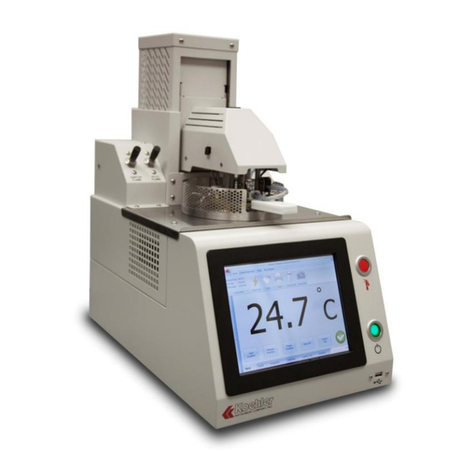
Koehler
Koehler K71000 Operation and instruction manual

Air Mentor Intelligence
Air Mentor Intelligence Air Mentor 2 user manual

Lasertec
Lasertec TruPulse L2 Quick reference field guide
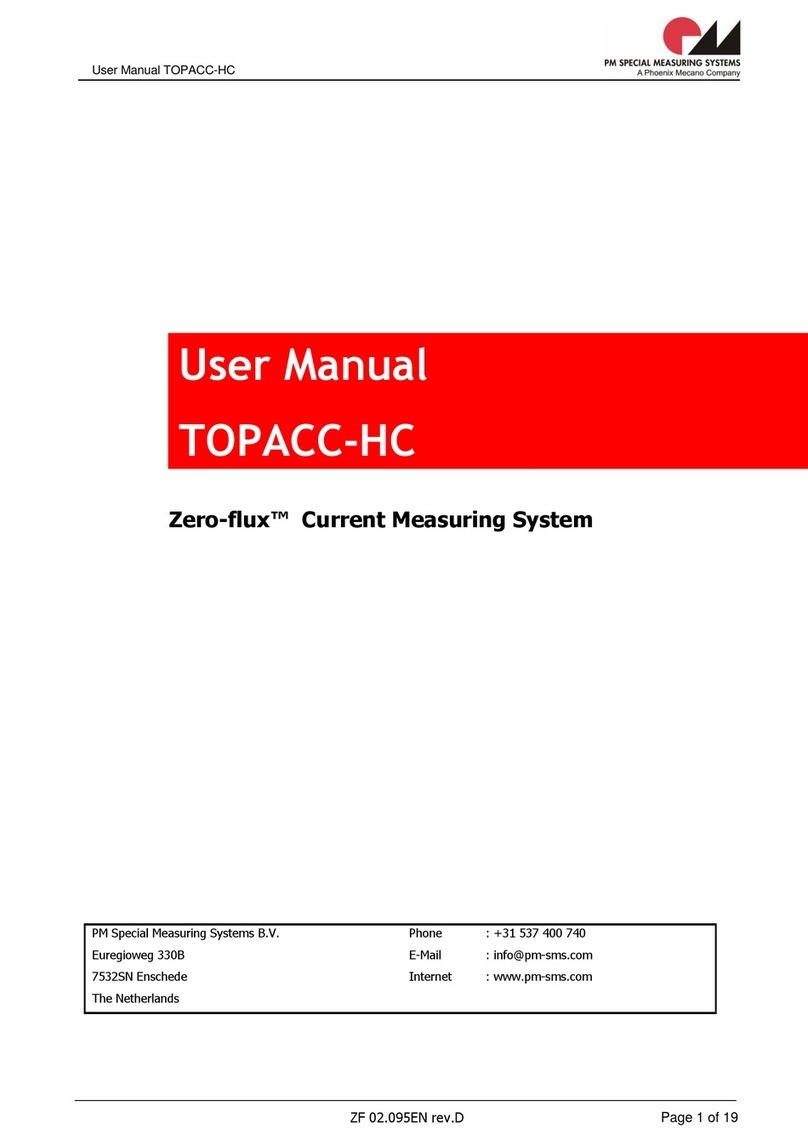
Phoenix Mecano
Phoenix Mecano Zero-flux TOPACC-HC user manual
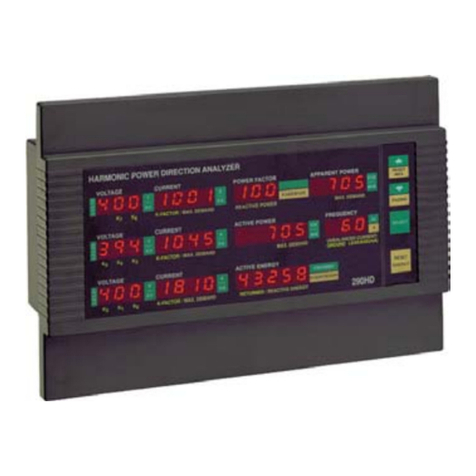
Satec
Satec PM290 reference guide
